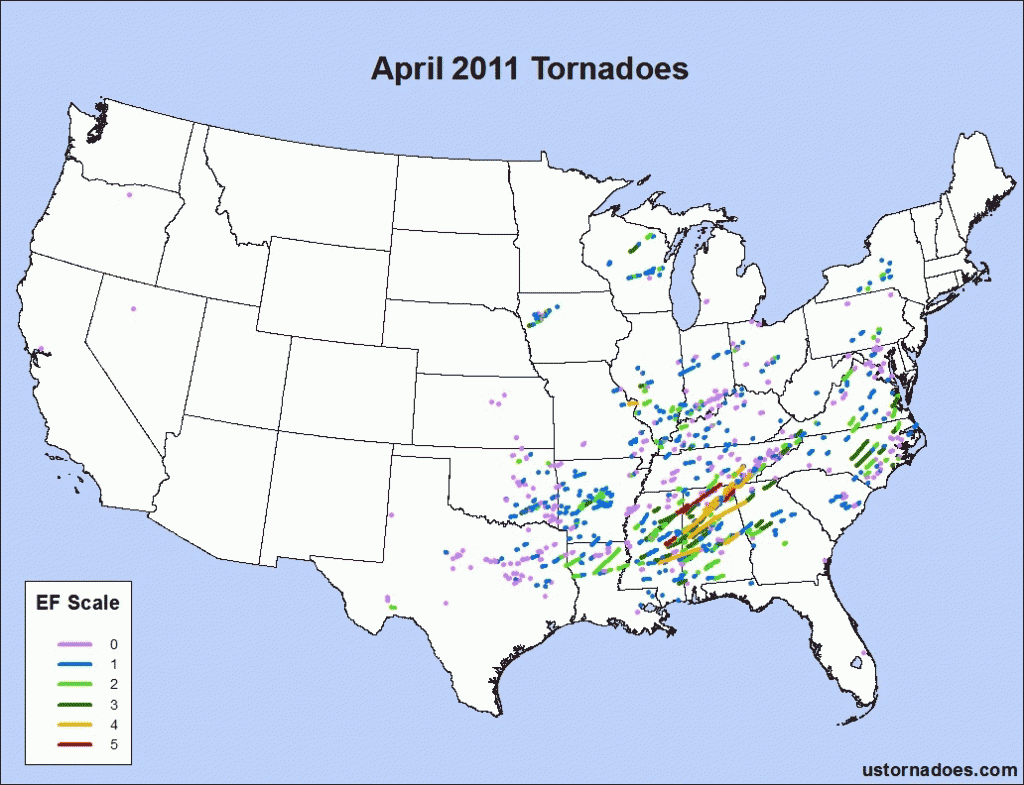
In a “Perfect Tornado Year,” April 2011 is the perfect tornado month. In fact, it would be much quicker to talk about times during the month that did not feature tornado activity rather than those that did.
758 tornadoes touched down on 21 different days. That total is almost 500 percent normal, and is the biggest monthly total in the record (which begins in 1950) for any month by over 200 tornadoes.
Related: The Perfect Tornado Year | April tornado climatology | Strong April tornadoes
Significant tornado events happened on more than half a dozen instances, and throughout the entire month.
22 percent of the tornadoes during the month were rated strong, with 17 of them coming in at a violent EF4+ rating. That includes four EF5s, all on April 27.
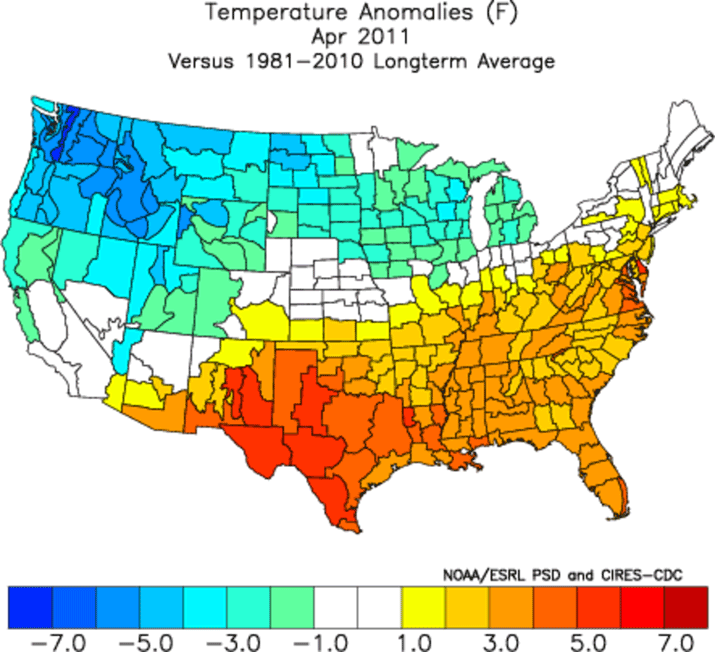
A glance at the temperature scheme across the country during April 2011 helps tell the tale of the month. Both significantly colder than normal and significantly warmer than normal conditions were present across the country. The southern and southeastern U.S. into the Mid-Atlantic were particularly mild throughout the month.
Storm track? Take a look at the area in between the cold and warm anomalies. That was a pretty common area.
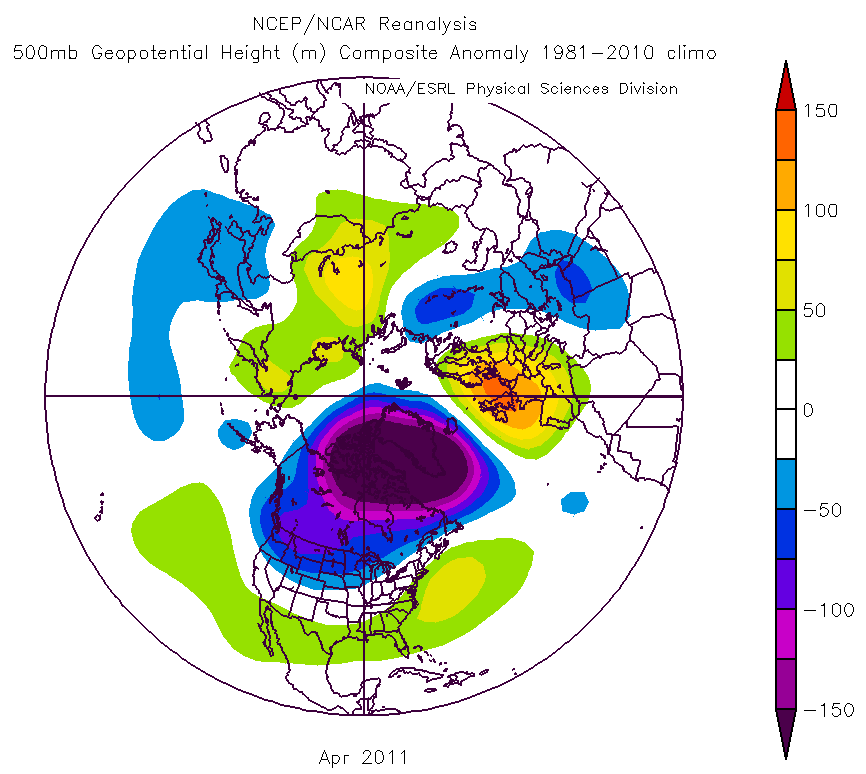
As we saw in the record March for tornadoes, the pattern was dominated by a +NAO and a fast northern jet stream boosted by the previous winter La Nina.
A tendency for ridging near the East Coast is also noted, with positive 500mb anomalies across the Gulf (which would help keep it toasty) and out into the Pacific as well. Even at a full-month average, it’s plainly seen how the mean trough is fairly low amplitude overall. That type of orientation is often favored for the largest outbreaks.
April 2011 followed a fairly average tornado month in March, though much of that month’s activity was focused on the latter portion as low pressure after low pressure moved across the country. So, perhaps the idea was there that April was going to keep on delivering, though doubtful anyone could have imagined how much.
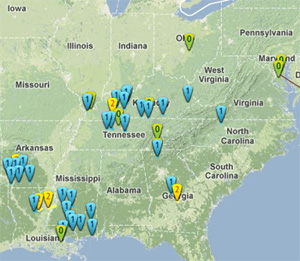
The month opened with a significant east coast trough and coastal system as well as temporary ridging on the West Coast. The now seemingly continuous stream of storms was also ongoing though, with the first big tornado producing trough moving through the Pacific Northwest on the 2nd.
The trough eventually spawned a strong surface storm over the Plains that traveled into the lakes and a secondary low formed over the southern U.S. along the trailing front. The first large tornado outbreak accompanied it on the 4th into the 5th.
Two main areas of tornadic activity were noted, one centered on Kentucky and Tennessee thanks largely to surface flow around the Lakes low. And a second across Arkansas, Louisiana and Missisisippi in relation to the secondary low along the front.
April 4-5, 2011 (46 tornadoes): EF0, 9 | EF1, 31 | EF2, 6
As the large scale features driving the first tornado outbreak pushed off the northeast coast, the next significant trough was entering into the northwest through the 6th. Instead of rapidly ejecting out like prior troughs, this one dug in and cutoff for a time, before finally pushing east into the Intermountain West on the 9th.
A spoke of energy rotating around the larger trough touched off the second big event of the month, when 20 tornadoes touched down around and after dark in Iowa as a surface low tracked that direction from the Colorado high plains. The localized outbreak contained one EF4 as well as several EF3s.
April 9, 2011 Mapleton, Iowa tornado via FindTheTornado
Seven tornadoes were also recorded from eastern Kentucky into North Carolina, but this energy was far removed, so it should probably not be counted as originating from the same system.
The same long-wave trough pushed deeper into the Plains on the 10th as the initial surface low deepened heading through Minnesota. To the southeast in the warm sector, over a dozen tornadoes — as strong as EF3 — touched down in Wisconsin.
Other tornadoes were recorded in Texas, Missouri and Alabama. This event that rolled into early on the 11th is the second in a sequence, but discrete from that on the prior day.
April 9-11, 2011 Outbreak Sequence (41 tornadoes): EF0, 2 | EF 1. 23 | EF2, 7 | EF3, 4 | EF4, 1
Following a few day break, April 2011’s real fury was about to start unleashing. The outbreak sequence of 14-16 April, with 178 tornadoes, would be the outbreak of most years, or really of multi-year periods. In April 2011, just an appetizer.
The unrelenting northern stream dropped yet another strong wave through the Pacific Northwest and across the Intermountain West on the 13th into the 14th.
By the morning of the 14th a powerful low-amplitude trough was pointed at the southern Plains, with surface low pressure development near the Texas and Oklahoma panhandles. The low would march into Kansas while deepening through the evening as the jet punched out into the Plains.
The result was 48 tornadoes on April 14 alone, mainly in Oklahoma. But the event was just getting started.
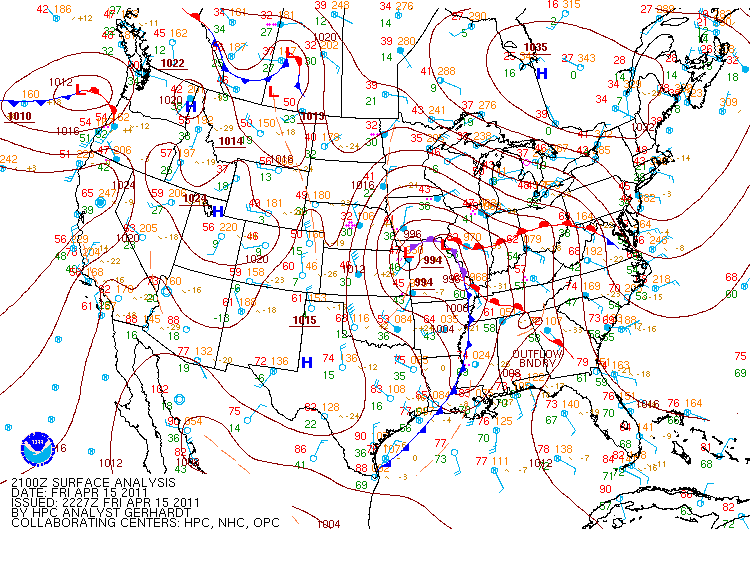
The upper-level trough continued to strengthen on the 15th, eventually closing off while moving into the Midwest. A strong surface low was nearly stacked as it headed into Missouri the same day.
72 more tornadoes touched down across the South on that day alone. Alabama and Mississippi were particularly hard hit with six EF3s in the region, several of which cost lives.
Moving into the 16th, the upper level trough began to open back up, and became negatively tilted moving trough the Lakes region. At the same time, a secondary low developed to the lee of the Appalachians and moved up the Mid-Atlantic Piedmont.
If we follow the 6 hour rule for outbreaks, the event on the 16th was separate from the prior days event. Either way, April 16 went down as the largest tornado outbreak to hit North Carolina, and included tornadoes up into southern Pennsylvania as well further south in South Carolina (the end of the first outbreak).
April 14-16, 2011 Outbreak Sequence (178 tornadoes): EF0, 53 | EF1, 80 | EF2, 32 | EF3, 13
After a short break, yet another disturbance rode in on the northern stream, and ejected out into the central U.S. on the 19th as a surface low strengthened in the Midwest on its way toward the eastern Great Lakes.
April 19, 2011 Girard, Illinois EF3. Video by Skip Talbot.
This quick-hitter of a system dropped 82 tornadoes as part of the sequence, with 75 hitting along an eastern Missouri to Ohio swath in the late day to overnight hours between the 19th and 20th. Much of the tornado activity occurred as a warm front lifted through the area out ahead of the low.
Most of the tornadoes in this event were weak, but one EF3 touched down just southwest of Springfield, Il.
April 19-20, 2011 Outbreak Sequence (82 tornadoes): EF0, 30 | EF1, 42 | EF2, 9 | EF3, 1
Heading deeper into the month, it’s no surprise at this point that as soon as one trough exited the northeast, another was building out west.
Front running vorticity out ahead of a larger trough created a few tornadoes on the 21st, but the next coordinated assault would come the 22nd through the 23rd.
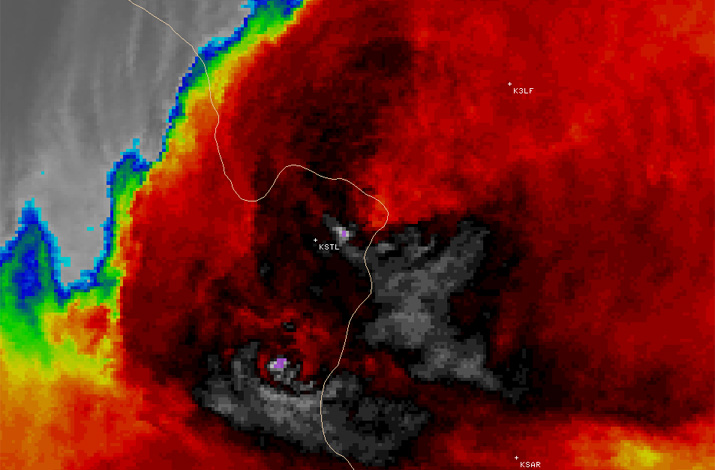
A moderately deep surface low passed from the southern High Plains into the Great Lakes, spawning two separate outbreaks. The first contained 21 tornadoes on the 22nd, and the second dropping 11 on the 23rd.
The event included a number of strong tornadoes, and is probably best known for the EF4 that hit St Louis Airport.
April 22-23, 2011 Outbreak Sequence (32 tornadoes): EF0, 15 | EF 1, 11 | EF2, 5 | EF4, 1
In April 2011, a day like the 24th that only dropped 11 tornadoes is hardly even worth mentioning, except that the “big dog” event was beginning to gather out west as the long-wave pattern snapped back to a broad trough across the west.
As noted in the brief look back at the Super Outbreak last year:
“It was well advertised that an event of an unusual magnitude was on its way, with forecasters and hobbyists taking notice about a week out, and the alarm growing stronger by the day.
“A tremendous longwave trough began to eject out of the West on the 25th as a frontrunning vort. max spawned a number of tornadoes across the South from Texas and to the east. This was only a sign of things to come as a very powerful low-amplitude vort. max poured in on a fast pattern still impacted by a waning La Niña.”
In that post, it was mentioned that the overall four-day event is perhaps more accurately two outbreaks, but figuring out exactly where one ends and the other begins is somewhat difficult.
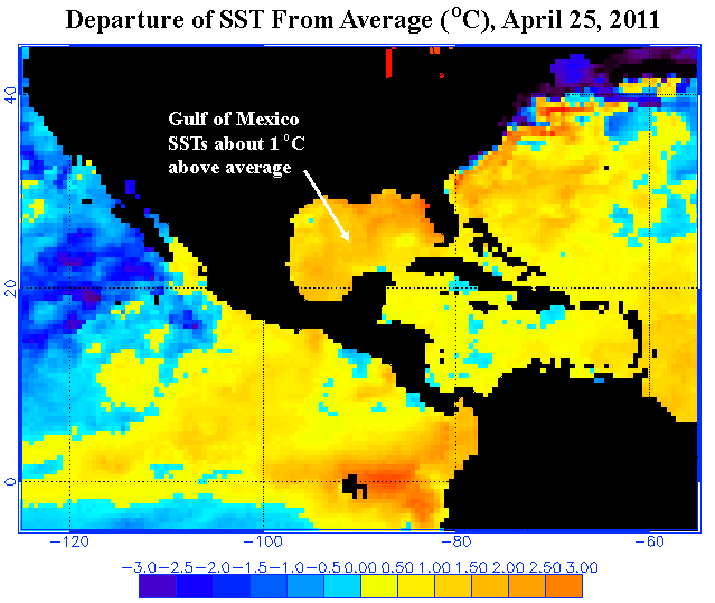
Regardless, the 350 tornadoes over the span of the 25th to the 28th was unheard of. On the 27th alone, 207 tornadoes touched down, 68 of which were classified as strong (or EF2+).
On the morning of the the big day of the month, low pressure systems were lined up along a front from near Detroit to northeast Texas and then down west of the Texas coast. Very warm and moist air poured north off a warm Gulf as the base of the trough plowed into the warm sector.
Related: Videos of the Violent EF-4 and EF-5 Tornadoes on April 27, 2011
At 4 p.m. that day, the strengthening surface low pressure system was near the Bootheel of Missouri with a cold front extending south through southwestern Louisiana. At the same time, numerous long-track supercells were cruising through Mississippi, Alabama and Tennessee in particular.
Tornadoes, including some strong and deadly ones continued into the night and early the next day as the storm headed northeast.
April 25-28, 2011 Outbreak Sequence (350 tornadoes): EF 0, 127 | EF1, 138 | EF2, 48 | EF3, 22 | EF4, 11 | EF 5, 4
28 states saw tornadoes touch down or pass within their boundaries during the month. Alabama, swarmed by tornadoes on several occasions, lead the way with 109 tornadoes. That’s over two times Alabama’s normal average for an entire year and about 12 times more than the state might typically expect during April.
Seven more states finished with 40 or more tornadoes: Tennessee (85), Mississippi (67), Texas (57), Arkansas (56), Oklahoma (50), North Carolina (47), and Kentucky (42).
43 killer tornadoes left 363 people dead, and 3,551 injured. 9 tornadoes killed 12 or more people, with two on April 27, 2011 surpassing the 50 mark at 72 and 64 each.
47 tornadoes had a path length of 25 miles or greater. Of that bunch, 11 had tracks of 50 miles or longer, with three at 100 miles of more. The longest track of the month was an EF5 which went 132 miles from Alabama into Tennessee on the 27th.
Sources…
Jeff Masters, “Tornadoes, floods, and fires continue to pound U.S.,” April 27, 2011. http://www.wunderground.com/blog/JeffMasters/comment.html?entrynum=1791
NOAA Daily Weather Maps http://www.hpc.ncep.noaa.gov/dailywxmap/
NWS Birmingham Alabama, “Historic Outbreak of April 27, 2011,” http://www.srh.noaa.gov/bmx/?n=event_04272011
CIMSS Satellite Blog, “EF-4 tornado strikes the St. Louis, Missouri area.” April 23, 2011. http://cimss.ssec.wisc.edu/goes/blog/archives/7876
Earth System Research Laboratory, US Climate Division Dataset Mapping Page, http://www.esrl.noaa.gov/psd/data/usclimdivs/
Earth System Research Laboratory, Daily Mean Composites, http://www.esrl.noaa.gov/psd/data/composites/day/
Storm Prediction Center, “WCM Page Severe Weather Database Files,” http://www.spc.noaa.gov/wcm/#data
Tornado History Project, http://www.tornadohistoryproject.com
Penn State, “North American Reanalysis Selection Page,” http://www.meteo.psu.edu/~fxg1/NARR/index.html
Latest posts by Ian Livingston (see all)
- Top tornado videos of 2023 - January 1, 2024
- March 31, 2023 tornado outbreak videos - March 31, 2023
- Top tornado videos of 2022 - December 31, 2022
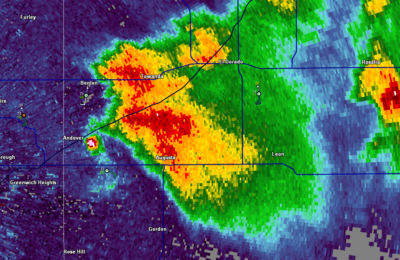
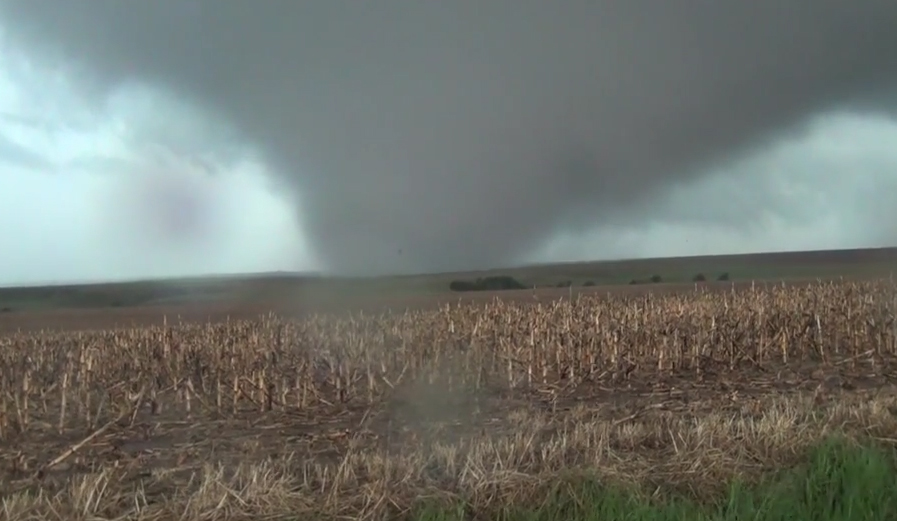
just a heads up this whole article has 2012 instead of 2011 listed in the parts that total each event 🙂
ex: April 25-28, 2012 Outbreak Sequence (350 tornadoes): EF 0, 127 | EF1, 138 | EF2, 48 | EF3, 22 | EF4, 11 | EF 5, 4
yikes and you’re the first to notice… 8 years later lol. thanks.